Stranded Deep impressions: is this island survival any different?
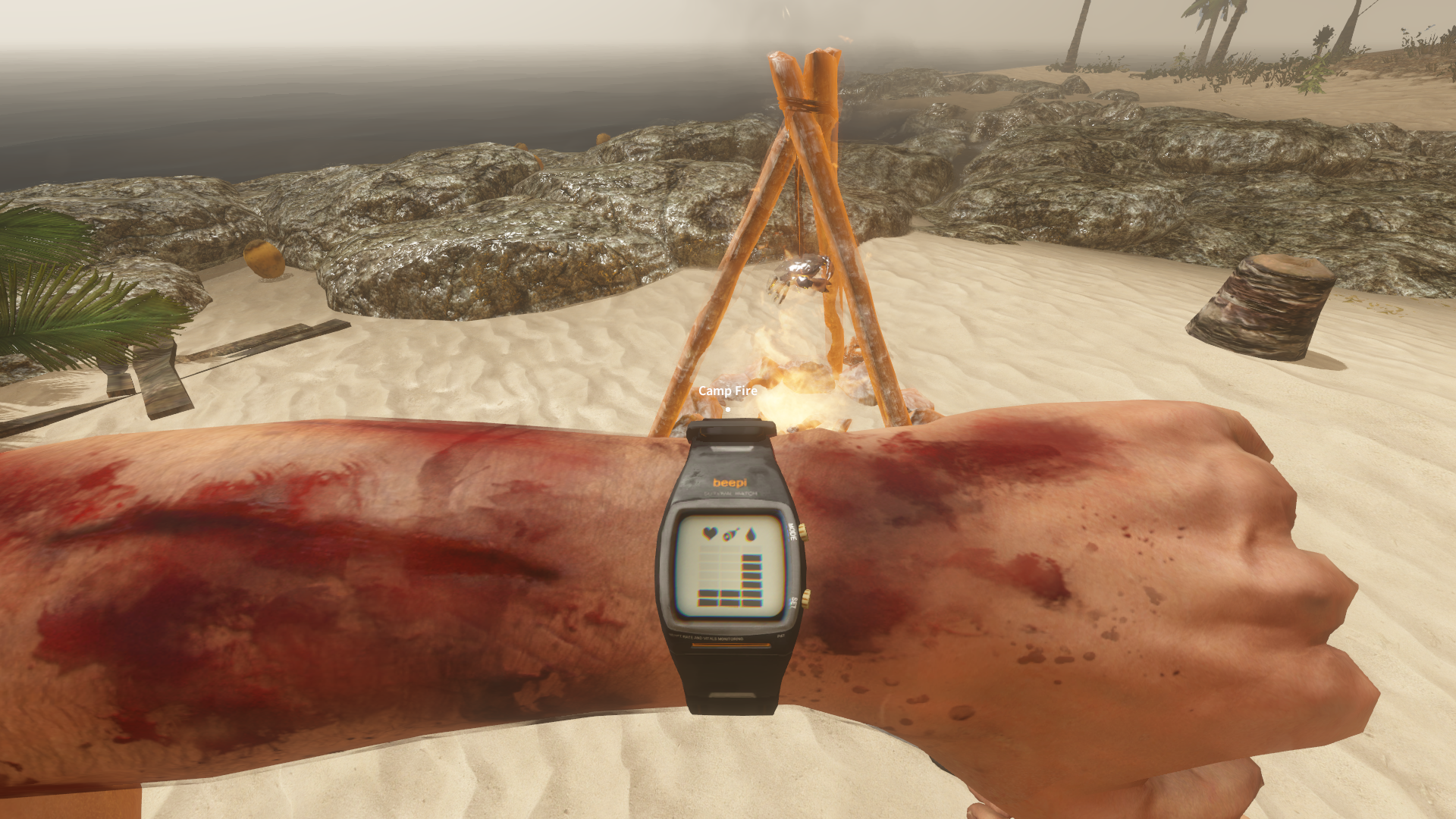
Whenever a new survival crafting game pops up, I have the same thought: aren't we tired of these yet? The mix of scrounging, crafting, cooking, eating, hunting, being hunted, and dying? Breaking trees into logs and logs into sticks and sticks into tools while managing health and hunger and thirst and exploring a procedurally generated world... haven't we done that? Like, a lot?
Stranded Deep was released on Steam Early Access on Friday, January 23rd, and at the time I played it, it was sitting at number three on the Steam Top Sellers list. Clearly, many of us aren't tired of survival crafting games yet, or maybe we're just all hoping to find one that's doing things a little differently.
This one certainly doesn't start differently. Just like The Forest, Stranded Deep begins with a plane crash. Unlike The Forest, the island you wind up stranded on is tiny and not inhabited by naked cannibals, though sharks—the naked cannibals of the deep—patrol the waters offshore. Once you've paddled to land, you begin gathering sticks and stones to make axes and hammers, chop down trees for firewood and shelter, and search for foods such as potato plants, fish (hunted with a spear), and crabs. There's no HUD: to see your stats you can glance at your wristwatch which shows your health, hunger, and thirst.
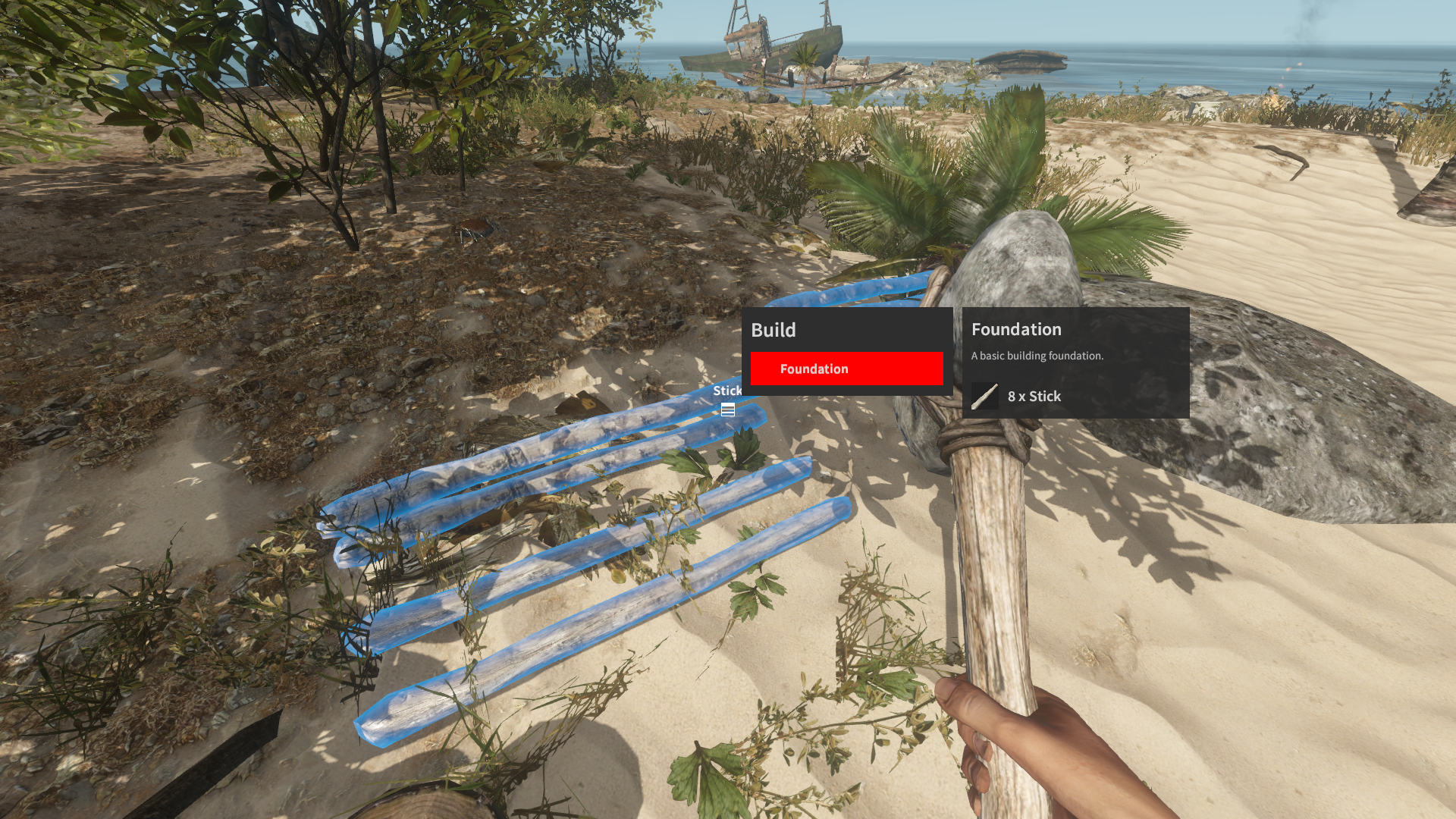
Crafting isn't done in an inventory pane but on the ground in front of you, similar to another Early Access game, TUG. Drop stuff into a pile and an icon notifies you if something can be crafted. This method is a bit more realistic than a crafting window, I suppose, but it comes at the cost of convenience, and coupled with the lengthier act of going through your inventory and manually dropping items on the ground just to find out if you can make something, I'm not sure it's entirely worth it.
The procedurally generated islands of Stranded Deep are small and nondescript. There are shipwrecks as well, sometimes beneath the waves, sometimes right on the island, usually with a few lockers and crates to search. Once I found a highly useful machete, another time I came away with a flare gun. I found part of an engine and an empty jerry can, hinting that there may be ways build more complex watercraft.
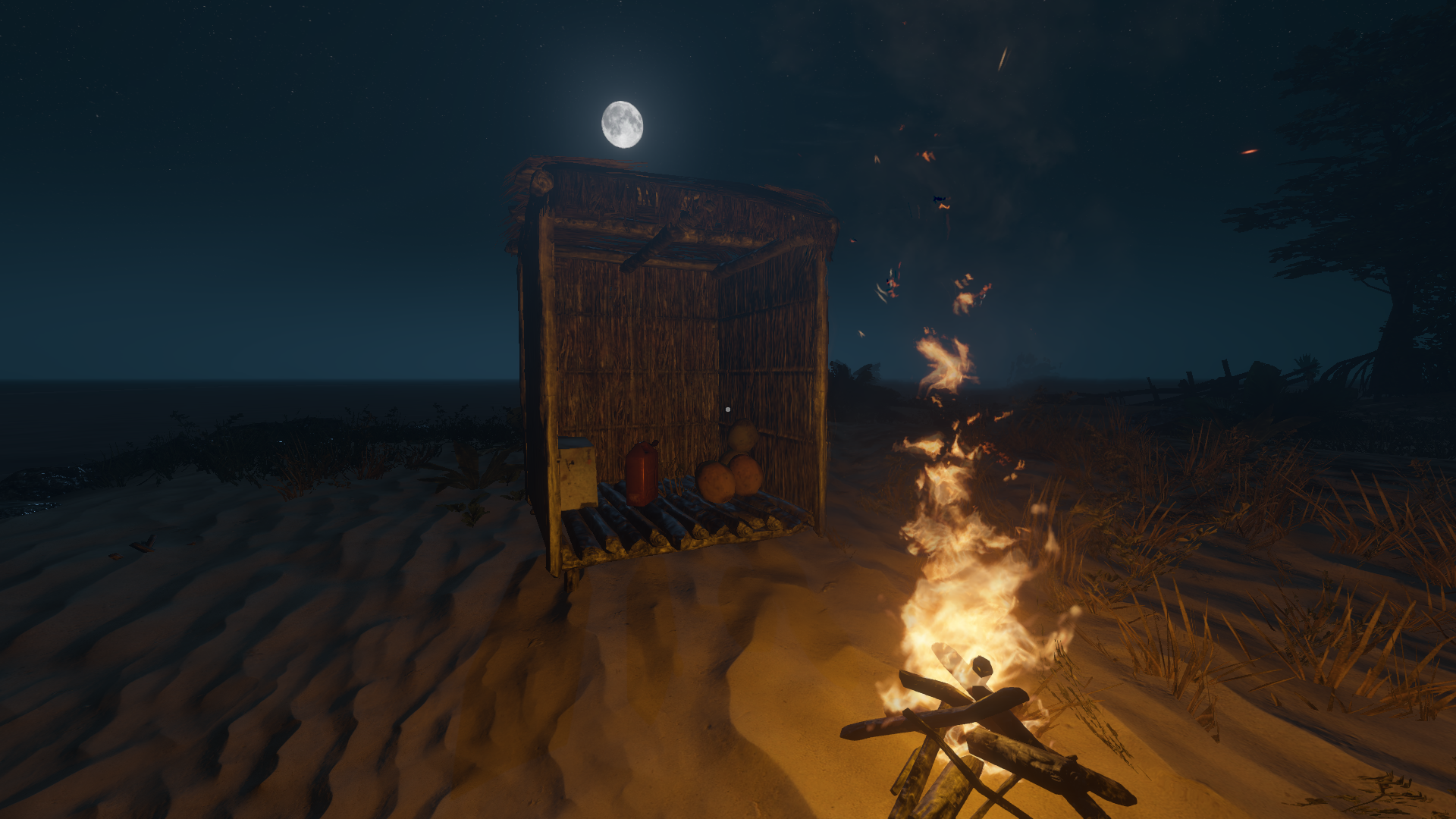
Cooking is tricky in that you need to physically hold your food in the campfire for a certain period of time, and after doing it a dozen times I still don't know how long that is. I let the sizzling sounds recycle and replay several times and 'crab' never became 'cooked crab.' I ate several; sometimes I got sick, sometimes I didn't. Consuming three fish was fine, but a fourth made me vomit and break out in a rash. As usual, much more emphasis is put on food than water, which always feels backwards to me. In reality, lack of water will kill you long before lack of food will, and like most games of this sort, the food meter in Stranded Deep is the priority because it depletes so quickly.
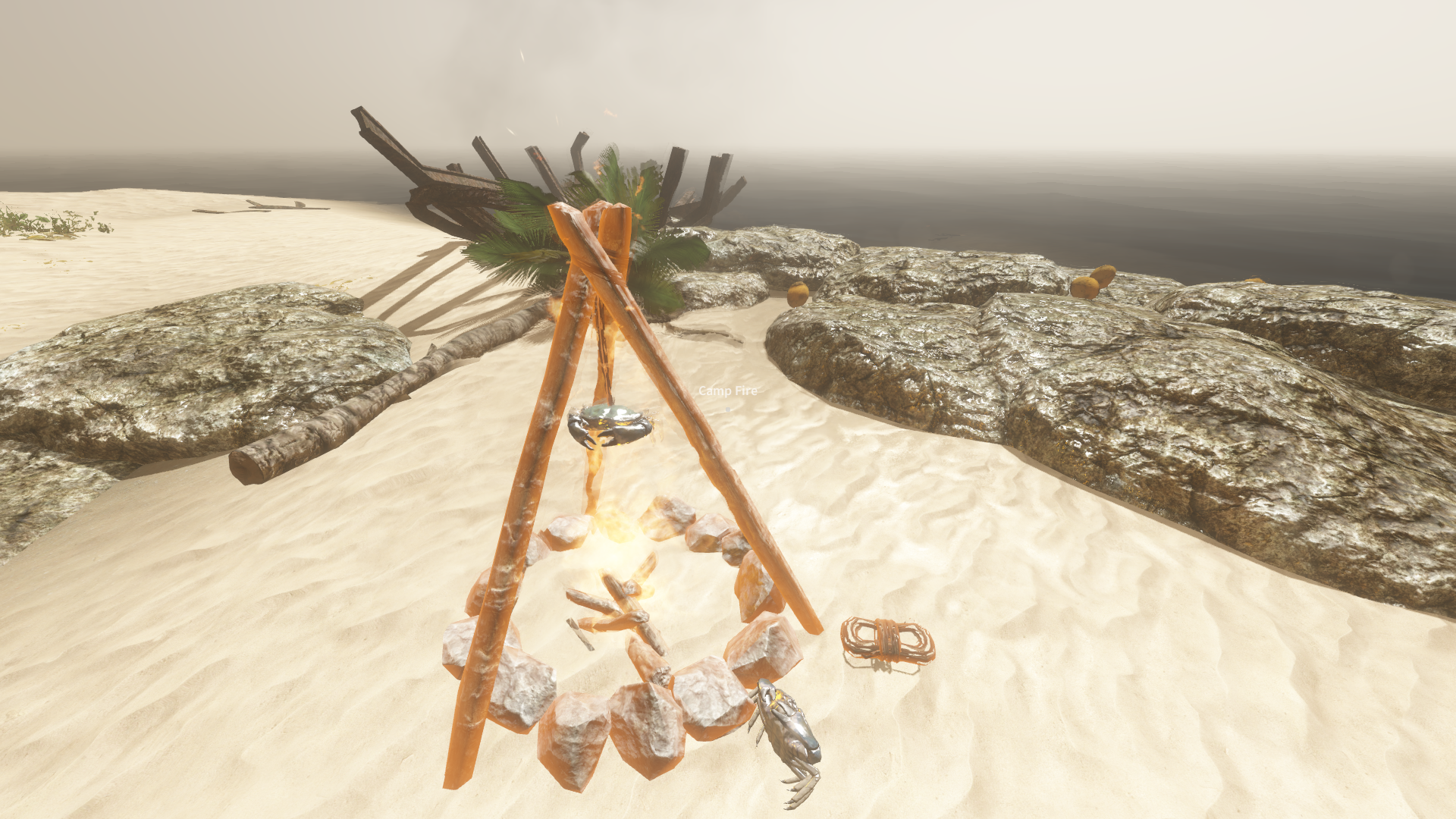
The biggest problems come with traveling to new islands. In all my games, I had to leave my starter island soon after arriving due to lack of usable materials, specifically stones. Since stones are used for so many different things like axes, hammers, spears, and firepits (which allow you to leave something cooking in the fire rather than holding it there), I found myself constantly in need of more. There were very few to be found, and there's currently no way to bash boulders into stones, so you can't make your own. So, I paddled my raft towards the nearest island, which doesn't really work the way it should.
The biggest gaming news, reviews and hardware deals
Keep up to date with the most important stories and the best deals, as picked by the PC Gamer team.
The map is broken into small zones (a visible white line drawn through the water is hard to miss) and entering a new zone seems to re-render everything. The nearby island I was headed for suddenly appeared much further away, and two more islands suddenly appeared that seemed just as distant. As I drew closer and paddled through more zones, other islands abruptly appeared in other directions, even behind me. By the time I reached the island I was headed for, I couldn't even tell which island I'd left. This feels like a big problem. If the open world lacks consistency, establishing a home base and finding it again later is going to be annoyingly difficult. With such a tiny inventory (eight slots that can only hold stacks of four) you're often forced to leave some gear behind at your base while venturing out.
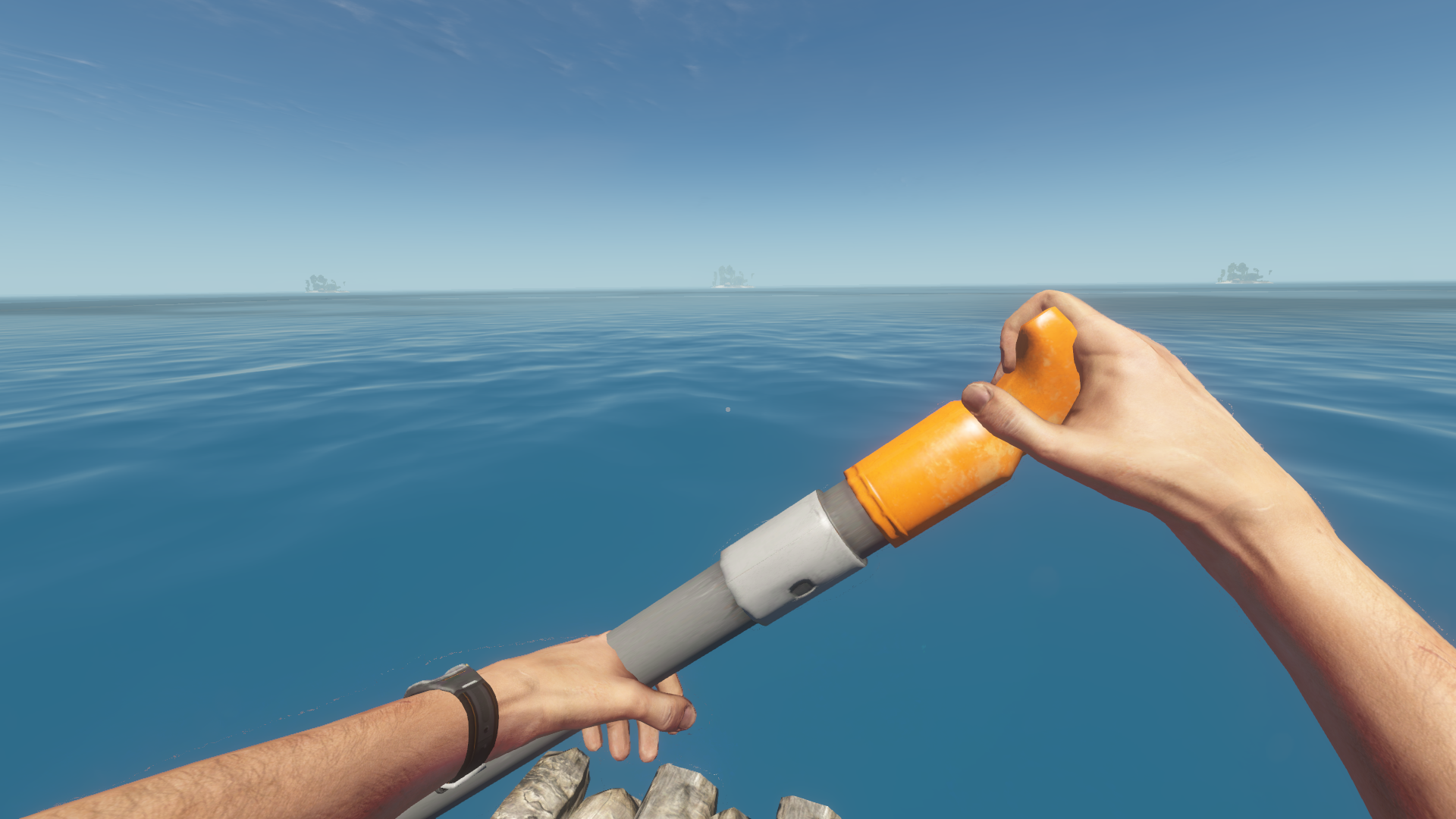
Another problem with travel is related to the raft itself. After my third island, the raft became stuck in the water and would only spin in circles when I paddled, and even dragging it to a new spot wouldn't get it to move when I started paddling. I eventually climbed off and built a raft out of logs, but when paddling it into a new zone it abruptly vanished, leaving me to swim the rest of the way. This happened again after leaving the next island on yet another crafted raft, only this time it happened in the middle of the night and I was plopped into the water next to a great white shark that chewed me to bits.
Most of my deaths came as the results of bugs. You will automatically climb trees if you walk near them, meaning that while rushing around I often found myself climbing halfway up a tree trunk without intending to, leading to a couple of nasty falls at low health. Climbing into a shipwreck on one island, I dropped through a hatch into the hull and couldn't climb back out, forcing me to abandon what had been a fruitful start. I expect bugs like this in an alpha, and I expect they'll eventually be fixed. This is just a warning to potential early adopters that there are many.
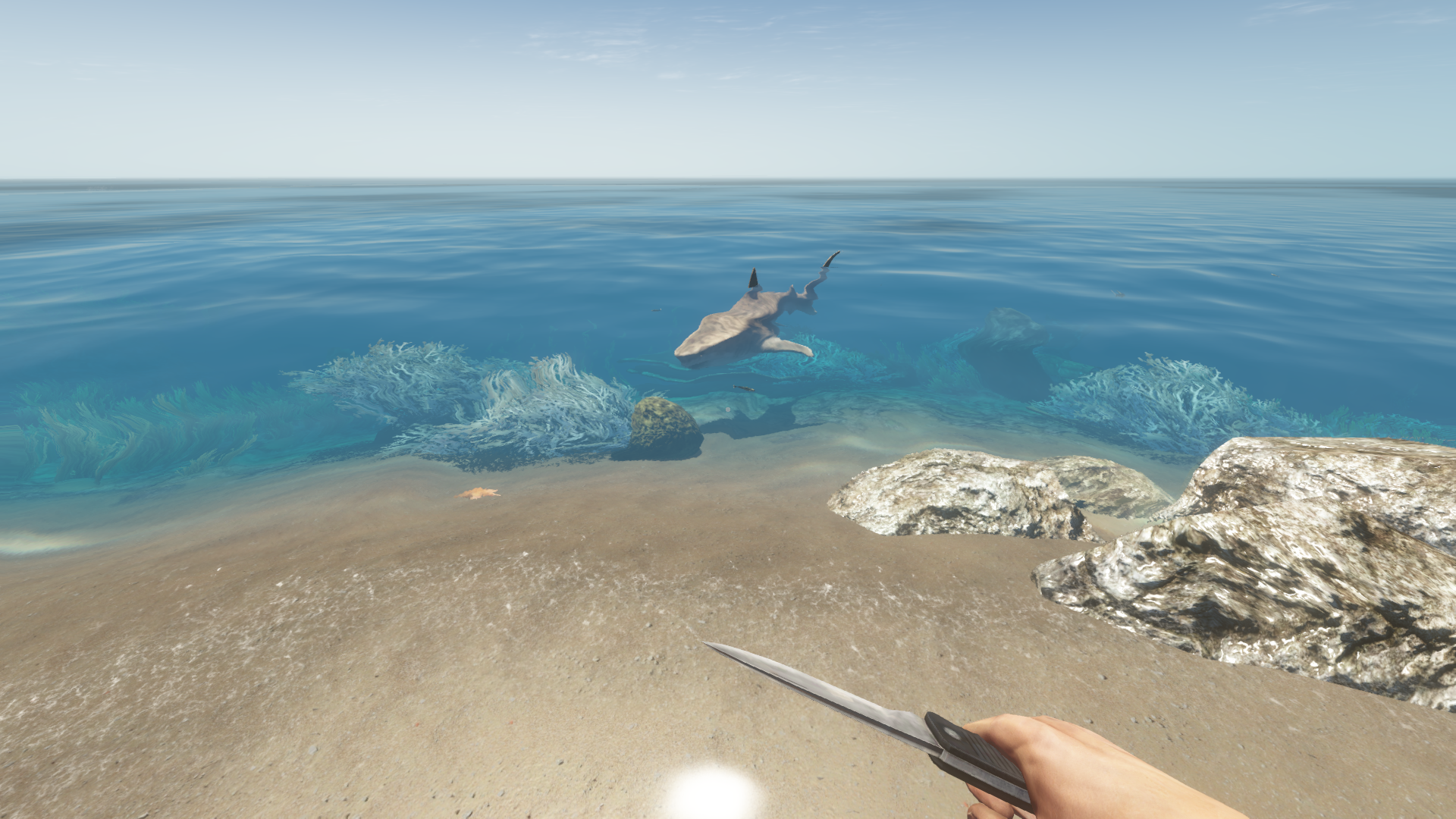
Despite all the bugs and the annoyances of ocean travel, it's still an attractive world to inhabit for a few hours and I'd be interested in returning once the major issues have been addressed. In games like this I tend to initially enjoy the busywork of gathering resources and building shelters, but if there's not much more added soon I can see it getting old in a hurry. At this early stage I can't really see anything that sets Stranded Deep apart from other survival crafting games, except that you won't be attacked by cannibals, animals, or monsters while trying to build your shack. I'm not sure that's enough, though, and I hope it finds a few more ways to stand out. Stranded Deep is available on Steam Early Access.

Chris started playing PC games in the 1980s, started writing about them in the early 2000s, and (finally) started getting paid to write about them in the late 2000s. Following a few years as a regular freelancer, PC Gamer hired him in 2014, probably so he'd stop emailing them asking for more work. Chris has a love-hate relationship with survival games and an unhealthy fascination with the inner lives of NPCs. He's also a fan of offbeat simulation games, mods, and ignoring storylines in RPGs so he can make up his own.

